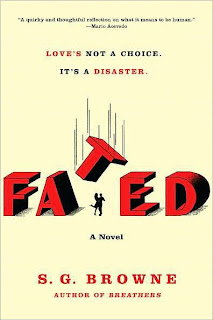
I always found anthologies and collections the easiest books to write reports for, back in my book-club days: I only had to write down a line, or at most a paragraph, while reading each story, and then type them all up together afterward. There were no notes to struggle with, no plot strands to untangle, no questions of which characters were important enough to mention -- just a quick summation of plot, setting, and theme, and then on to the next one.
That model, though, would be pretty dull for something that aims to be a
review, so I think I've got more work coming with
Stories
, a major new anthology edited by Neil Gaiman and Al Sarrantonio that I've read over the past few weeks. To review an anthology, one should find a central motif and examine how the book works through it, and which stories are better than others at explicating it. Most anthologies these days -- particularly in the SF/Fantasy side of the business -- make that very easy by signposting the theme in the title, like
Lesbian Unicorns in Starships or
Zombies Chew on Major Historical Figures. But
Stories is an anthology deliberately without a theme -- or, at least, so it says.
Gaiman has a short introduction talking about the genesis of the book -- in general terms that seem nothing like any book-proposal process I've ever been familiar with -- boiling it down to a collection of great original stories, in any genre, with any plot, from writers that he and Sarrantonio loved. There are twenty-seven of those writers; about half of them come from the SF/Fantasy genre -- no surprise, since Gaiman and Sarrantonio have both mostly worked those territories in their careers -- with the rest clustered around mysteries and thrillers, shading into "literary fiction." [1] But the stories aren't organized around those clusters, or in any obvious way -- they just come, one after another, each with their own baggage and aims.
So perhaps I
should run through those stories one by one, after all? I'll try it, at least:
"Blood" by Roddy Doyle -- A Dublin man struggles with a powerful desire for blood, or perhaps necks, in one of those stories that's technically excellent, but seems to have behind it, faintly, the author grinning with the thought that he's thought up an utterly new twist on a hoary old genre trope. (And he hasn't, actually -- though the story itself is spiky and ends very well.)
"Fossil-Figures" by Joyce Carol Oates -- Twin brothers lead highly allegorical and stereotypical lives in turgid, self-satisfied prose. I must admit that I've never read anything by Oates that I could tolerate, so I'm very biased -- but she always strikes me as among the writers most fond of the sound of their own words, with the least justification.
"Wildfire in Manhattan" by Joanne Harris -- The Norse gods are alive, if not all that well, and still staying ahead of the forces of Chaos in modern New York City.
"The Truth Is a Cave in the Black Mountains" by Neil Gaiman -- Gaiman is always at his most powerful and unforgiving in short fiction, and this is an excellent example, a story of the Scottish Highlands in a more violent time, and of two men who travel to a cave in search (supposedly) of gold.
"Unbelief" by Michael Marshall Smith -- The story of one gangland hit in New York City, at a festive time of year. If it were funny, it would be a shaggy dog story, but it's aiming for pathos -- so it's a shaggy something-else story, I suppose.
"The Stars Are Falling" by Joe R. Lansdale -- A soldier comes back from WWI France to rural Texas, hoping to get back to his peaceful life -- and finds out that not only can't you go home again, it wasn't really home to begin with.
"Juvenal Nyx" by Walter Mosley -- A clotted, gnarly vampire story that reads more like the beginning to a longer story, by a fine novelist whom I've always suspected of being an instinctive rather than a calculating writer.
"The Knife" by Richard Adams -- A short crime story, set in a British boys' school some time ago, to no serious effect.
"Weights and Measures" by Jodi Picoult -- After their young daughter dies, a husband shrinks while his wife grows --
literally. Plus several points for an interesting literalization of kinds of grief, but minus all of those points and more for obviousness and utter lack of subtlety.
"Goblin Lake" by Michael Swanwick -- An oblique tribute to James Branch Cabell begins with the story of a soldier in the Thirty Years War who discovers the title magical lake, but turns into a disquisition on the nature of fictional characters before it's done. It's amusing and thoughtful by turns, but has somewhat less substance than we expect from Swanwick.
"Mallon the Guru" by Peter Straub -- An American guru-in-training goes with his German journeyman-guru to see an Indian yogi (master guru), to be told frightening and nonspecific things, in a story that ends before it can do much of anything.
"Catch and Release" by Lawrence Block -- Some serial killers are like anglers: just knowing that they could have made a kill is enough for them. A gem of a story, perfectly chilling, among the best of a great writer of short stories.
"Polka Dots and Moonbeams" by Jeffrey Ford -- A couple relive their perfect day at the end of the world, once again. Ford implies a vast science-fictional background for those of us who think about such things, but the surface of the story is just fine for everyone else.
"Loser" by Chuck Palahniuk -- In a stunning mash-up of sophomore composition cliches, a second-person narrator goes on an unnamed game show (
The Price Is Right) while on drugs, and It Is All Very Dreamlike.
"Samantha's Diary" by Diana Wynne Jones -- A frivolous but diverting little story, set a few hundred years hence (which, as usual, feels no more than two decades hence, if not an alternate 1990), in which a young woman narrates the Christmas-time antics of one particularly determined suitor, who has just rediscovered a song about the appropriate for twelve days of that season. Reads a bit like a Connie Willis holiday story, only not quite as polished and manic.
"Land of the Lost" by Stewart O'Nan -- A middle-aged woman spends all of her free time searching for the burial place of the young victim of a serial killer; poignant but very short.
"Leif in the Wind" by Gene Wolfe -- The small crew of a starship with a long-term mission has to deal with one member of the crew finding alien life -- "birds" that fly through empty space and nest "inside" people.
"Unwell" by Carolyn Parkhurst -- A domineering older sister recounts her long life, and how she's always gotten her younger sister to do what she wants.
"A Life in Fictions" by Kat Howard -- A woman is deeply unhappy at having been her ex-boyfriend's muse, since that meant she was sucked into all of his stories, to live as the character version of herself.
"Let the Past Begin" by Jonathan Carroll -- A love triangle centering on a female war correspondent is settled by the prophecy of a half-dead Azerbaijani oracle child.
"The Therapist" by Jeffrey Deaver -- In a severely broken-backed story -- in two parts, with utterly different tones and styles -- a man first explains his methods of saving his patients from "nemes" (negative memes), and then is put on trial for related events. This is the story that made me most want to avoid the author's other work; it's heavy-handed as well as being clumsy and dull.
"Parallel Lines" by Tim Powers -- An aged woman learns that her recently dead twin sister is
still trying to control her life, but takes steps to finally correct this.
"The Cult of the Nose" by Al Sarrantonio -- One (possibly insane) man explains a gigantic, age-old conspiratorial cult of gleeful anarchists, discernible by their ostentatious false noses.
"Human Intelligence" by Kurt Andersen -- An alien spy on Earth is finally unmasked, due to global warming, to his relief. Punched up and shortened, it would have been a solid
Galaxy story in the mid-50s.
"Stories" by Michael Moorcock -- A thinly fictionalized Moorcock -- here, a noted writer of thrillers, rather than of SF/Fantasy -- writes of the not-New Wave and particularly of his complicated relationship with a writer who is precisely not-Tom Disch. Sadly and ironically, there's no
story here.
"The Maiden Flight of McCauley's
Bellerophon" by Elizabeth Hand -- Old friends who once worked together as young men in the not-Air and Space Museum of the not-Smithsonian reunite to fake an old, and possibly apocryphal, piece of film showing an earlier-than-the-Wright-Brothers manned flight, for a dying and even older acquaintance.
"The Devil on the Staircase" by Joe Hill -- In the prose equivalent of a concrete poem -- words arranged specifically on the page -- a man recounts the story of his young life and passions, on a steep mountainside in Italy a hundred years ago.
There are definitely strong stories in
Stories, but it's also overfull with too-short pieces -- particularly in the middle -- that miss their mark or don't seem to have been aimed at anything in the first place. There's a really strong two-hundred-page paperback anthology struggling to claw it's way out of the four-hundred-plus pages here -- but that's the case with most anthologies.
There also are several seemingly obvious paired stories -- the Parkhurst and Powers stories, for example, the Block and O'Nan, the Doyle and Mosley -- that have been separated as Gaiman and Sarrantonio organized the book, perhaps because they would resonate badly with each other. But, still, they
do resonate, even at a distance, and having that happen three times is distracting for a theme-less anthology; it sets a reader looking to see if all of the stories will pair up.
Stories doesn't claim to be anything more than a clump of stories by writers that Gaiman and Sarrantonio like, stories that were specifically
not to be in any particular genre or tradition. They don't even, interestingly, claim that all of the stories are marvelous, or that any of them are. And that's exactly what this is: a clump of random stories, by a clump of semi-random large names, many of which work but many of which do not. If you don't read any short fiction, this is not a good place to dive in, but if you're used to picking through the curate's-egg minefield of short fiction, you can find some gems here.
[1] There's no good definition of literary fiction, but we generally all know it when we see it. The kind Gaiman and Sarrantonio showcase here is literary in the "formally and technically striking" sense rather than the "stories about academics and academia" sense.
Book-A-Day 2010: The Epic Index
 Hellboy is at the center of his own comics universe, these days -- he's the sun that B.P.R.D. and Lobster Johnson and Abe Sapien and Witchfinder all dance around. But it wasn't always that way; at one point he was just another colorful violent character in a distinctive costume. And, since that time was the late '90s, it was inevitable that Hellboy would find himself in a cross-universe team-up.
Hellboy is at the center of his own comics universe, these days -- he's the sun that B.P.R.D. and Lobster Johnson and Abe Sapien and Witchfinder all dance around. But it wasn't always that way; at one point he was just another colorful violent character in a distinctive costume. And, since that time was the late '90s, it was inevitable that Hellboy would find himself in a cross-universe team-up.















